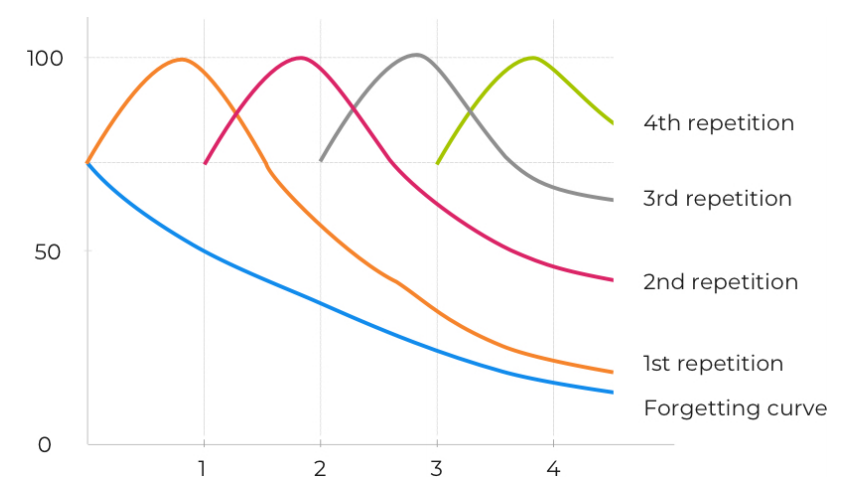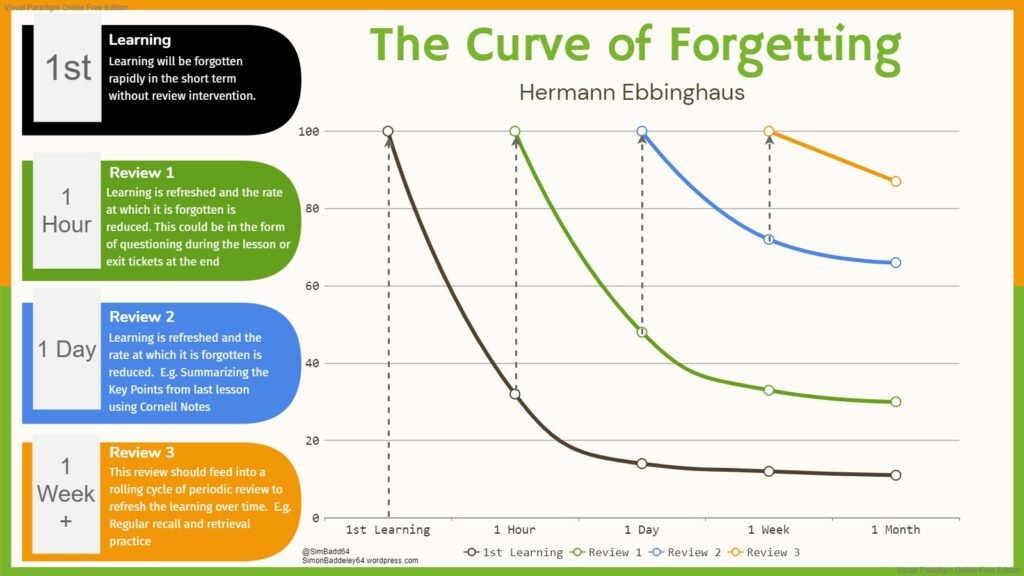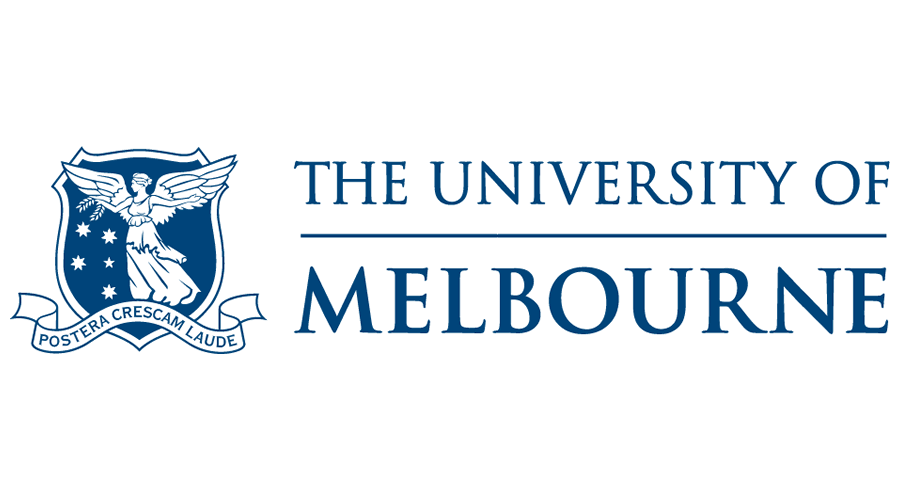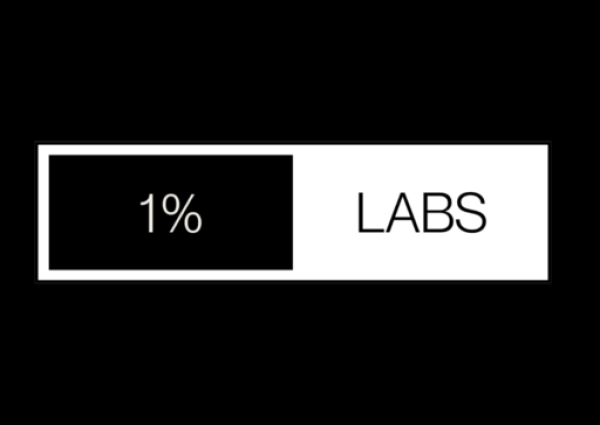Student Offer (Limited Time)
$79.95 AUD
✅ Lifetime Access
✅ All Future Updates
✅ First Access to Community
Get in now and be part of the NeuroStudyLabs 1% — the students who decided to stop winging it and start winning with strategy.
Have you ever studied something one day, only to forget most of it the next?
That’s not because you’re “bad at remembering” — it’s because of a psychological phenomenon called the Forgetting Curve.
First discovered by psychologist Hermann Ebbinghaus in the late 1800s, the Forgetting Curve shows how quickly we lose information when we don’t actively try to retain it.
The good news? There are proven ways to flatten that curve so you remember more for longer.

Forgetting is actually a feature, not a flaw. The brain is constantly making room for more useful or relevant information.
But for students, this means exam prep can feel like running on a treadmill — you study, forget, study again… and still forget.
The key to improving memory retention is interrupting the curve at the right times, so your brain gets the signal: this is worth keeping.
Here are the best science-backed strategies:
Instead of cramming, review the material at increasing intervals (e.g., 1 day later, 3 days later, 1 week later). Each review strengthens memory pathways and resets the curve.
Example:
Day 1: Learn the topic
Day 2: Review
Day 4: Review
Day 7: Review
Testing yourself is far more effective than re-reading notes.
Every time you retrieve information from memory, you make it easier to recall in the future.
How to do it: Use flashcards, past papers, or teach the topic out loud without looking at your notes.

You don’t have to keep relearning the same things over and over. At NeuroStudyLabs, we show you how to use techniques like spaced repetition, active recall, and memory optimisation to study less, remember more, and walk into exams confident.
Learn the exact system top students use to lock information into long-term memory — and never start from scratch again.

1. How long should I wait before reviewing material?
Review within 24 hours of first learning, then space reviews further apart each time.
2. Does the Forgetting Curve apply to all subjects?
Yes — it affects all types of information, from maths formulas to language vocabulary.
3. Can cramming beat the Forgetting Curve?
Only temporarily. Without spaced repetition, most crammed information fades quickly.




✅ Lifetime Access
✅ All Future Updates
✅ First Access to Community
Get in now and be part of the NeuroStudyLabs 1% — the students who decided to stop winging it and start winning with strategy.
NeuroStudyLabs is a neuroscience-backed study skills program designed for high school and university students. It teaches you how to learn smarter, stay focused, retain more, and perform better — using proven techniques from cognitive science and psychology.
Students who want to study smarter, not harder — especially:
Year 10–12 students preparing for exams
University students juggling heavy workloads
Burnt-out students who’ve tried everything
High achievers looking to stay ahead
Whether you’re struggling to stay focused or aiming for top scores, this course gives you the tools to get there.
No — this isn’t about generic advice.
NeuroStudy Labs is a complete system based on how your brain actually works. You’ll learn how to apply techniques like:
Active recall
Spaced repetition
Deep work focus
Learning identity & mindset building
And you’ll get planning tools, templates, and weekly systems to make it stick.
You get lifetime access to:
7 detailed, video-based modules
50+ lessons with engaging transcripts & visuals
NeuroStudy Planner
Reflection prompts, mini-exercises, and toolkits
An entire brain-based study system you can follow forever
The full course is designed to be completed slowsly over 2-4 weeks, but it’s self-paced — you can move faster or slower depending on your schedule. Many students start seeing results within the first week of applying the system.
It’s grounded in neuroscience, not guesswork.
This is not about cramming more in — it’s about changing how you study, how you think, and how you feel about learning. It’s transformation, not just information.
Yes. If you complete the course and don’t see any improvement in your focus, motivation, or results, we’ll give you a full refund within 30 days — no stress, no pressure.
Perfect — NeuroStudy Labs helps high achievers unlock even more potential. You’ll learn how to study more efficiently, reduce stress, and gain a competitive edge that lasts through university and beyond.
